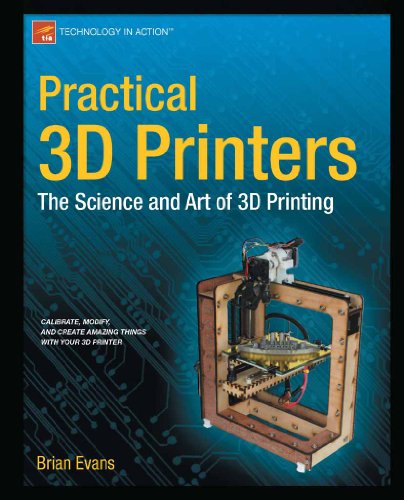May 6, 2013 at 2:29 PM ET
With a shot heard round the Internet, the first known 3-D printed gun is a reality. But the bigger ruckus comes from the gun’s digital blueprints, now available for free download by any shooters who want to build their own.
Cody Wilson, the polemic face of the not-for-profit 3-D gunsmith Defense Distributed, fired the organization’s latest prototype at the opening of a 28-second video posted on YouTube Friday. “The Liberator,” as the weapon is provocatively titled, is a 16-piece firearm made almost entirely of ABS plastic, with a metal firing pin and an embedded metal shank meant to provide enough metal mass to comply with the U.S. Undetectable Firearms Act.
Blue and white, and bearing more than a passing resemblance to a Star Trek phaser, the .380-caliber pistol fires with a single “pop” in Wilson’s hands. Apparently, the design works, though the barrel degrades over repeated firings and must be replaced.
Eight months into its mission to create and distribute the computer-assisted design (CAD) for a 100-percent 3-D printed gun, Defense Distributed is about as close to this goal as it can legally get. That is, provided laws don’t change to make what the group is doing illegal.
Even now, Defense Distributed’s latest success — though it may be a rather costly and cumbersome way to obtain a firearm, especially one that tends to self destruct — has gun-control advocates on the move. This was predicted by Wilson, who has long said that his group’s ultimate goal is not to build arms, but to test constitutional rights.
“I think this isn’t a project about firearms, it’s a project about political equality,” Wilson recently told NBC’s Nightly News.
Wilson, a law student at the University of Texas in Austin, is federally licensed to manufacture and sell guns and gun parts, as long as they’re not fully automatic. Not only is it legal for Wilson to make “The Liberator,” but distributing its plans for others to make it is also legal, according to the Bureau of Alcohol, Tobacco and Firearms.
“An individual who wishes to manufacturer a firearm for his or her personal use does not need a license, as long as it isn’t for an automatic firearm,” an ATF spokesperson told NBC News.
But the fact that the gun can be homemade and is largely plastic — and therefore harder to spot via metal detectors — has made it the center of a new debate in Washington.

On Sunday, Sen. Chuck Schumer, D-N.Y., endorsed a bill, entitled the Undetectable Firearms Modernization Act, that would bring the 1988 law up to date by banning 3-D-printed guns that “have no metal and could therefore slip through a metal detector.” Under the law, it would be a crime to build such a weapon.
“We’re facing a situation where anyone — a felon, a terrorist — can open a gun factory in their garage, and the weapons they make will be undetectable,” Schumer said at a conference. “It’s stomach churning.” Schumer said his bill would not restrict the use of 3-D printers for other purposes.
Schumer was speaking in support of legislation, proposed in the House of Representatives Friday by Rep. Steve Israel, D-N.Y., that bans “homemade, 3-D printed, plastic high-capacity magazines.”
“When I started talking about the issue of plastic firearms months ago, I was told the idea of a plastic gun is science fiction. Now that this technology appears to be upon us, we need to act now to extend the ban on plastic firearms,” read Israel’s statement.

On a technical level, enforcing the ban could be challenging. Firmware locks for 3-D printers and takedown protocols for CAD files for firearms have been proposed by some, and scoffed at by others.
“Every one of those measures is a nonsense and worse: unworkable combinations of authoritarianism, censorship and wishful thinking,” author Cory Doctorow wrote in criticism of Israel’s initial proposal. “Importantly, none of these would prevent people from manufacturing plastic guns. And all of these measures would grossly interfere with the lawful operation of 3-D printers.”
It’s legal for most Americans to buy guns, and it’s also easy for many people to acquire guns illegally, too. Industrial-level 3-D printers currently capable of producing “The Liberator” can cost upwards of $10,000, and require some training to operate. They may never put guns into the hands of people who otherwise wouldn’t be able to obtain them, but they still may become tools for nefarious acts.
“This technology is emerging so quickly that few law enforcement officials know what a 3-D printer is or understand how it can be used,” Jim Bueermann, former Redlands, Calif., police chief who is now president of the non-profit Police Foundation, told NBC News.
“I think we are going to see some very creative, technologically astute examples of criminal acts that are enabled by this technology,” he added. “This is one of the unintended consequences of the democratizing of the Internet.”
UPDATE: An earlier version of this story stated that the the prototype fired by Cody Wilson in the video was rendered unusable after firing six rounds. Wilson later clarified to NBC News that the barrels degrade after several shots, and are easily replaced.
— With additional reporting by Suzanne Choney
Helen A.S. Popkin is Deputy Technology & Science editor for NBCNews.com and TODAY. Follow her on Twitter and Facebook.
Original article can be viewed here
ADVERTISEMENT
[amazon_link id=”1430243929″ target=”_blank” container=”” container_class=”” ] [/amazon_link]
[/amazon_link]


You must be logged in to post a comment Login